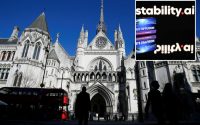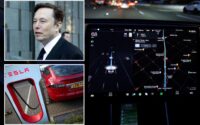Angry ex-astronaut details the problem with NASA
Charles Camarda, 70, who grew up in Ozone Park, Queens, retired from NASA in 2019. Among his missions in a 45-year career was flying on the first space shuttle to launch after the Columbia disaster in 2003. He has been sounding the alarm for years about safety lapses at the space agency, where he also served as director of engineering at the Johnson Space Center and deputy director of the NASA Engineering and Safety Center.
Feb. 1 was the 20th anniversary of the Columbia accident when all seven aboard died as the space shuttle disintegrated upon entering the Earth’s atmosphere on its return from space. We solemnly remember and honor all of NASA’s fallen heroes.
But to truly honor them, it is our obligation to learn from our mistakes and make the necessary changes to ensure they are never repeated. However, NASA has not learned the lessons of both the Challenger and Columbia accidents and is ill-prepared for the next space race with China; one which we may very likely lose.


I was a mission specialist on NASA’s return-to-flight mission on July 26, 2005. The script I read in memory of our lost colleagues during that flight, which was filmed by NASA, still haunts me to this day:
“Tragically, two years ago, we came once more to realize that we had let our guard down. We became lost in our own hubris and learned once more the terrible price that must be paid for our failures.”
They haunt me because NASA never let its guard down; in fact, it never put its guard up after each accident and only weakly feinted jabs to satisfy the recommendations of the Columbia Accident Investigation Board (CAIB). Worse yet, the fight was fixed.

Following Columbia, Admiral Harold Gehman was charged to lead the CAIB, and because of his leadership, it resulted in one of the most thorough and open accident investigations in U.S. history.
The board concluded that even though the technical causes of Challenger and Columbia were different, the real cause of the accidents was NASA’s toxic culture. The CAIB worked very hard and made sound recommendations for correcting cultural and technical problems.
Unfortunately, NASA would openly ignore the cultural issues raised, and haughtily brush aside the insightful recommendations of the board, only months after the accident. In fact, many of the new leaders exhibited the same bad behaviors – and almost caused tragedies for two successive shuttle flights, STS-114 – my mission – and STS-121, in 2006.

Columbia disintegrated after a large piece of foam came off the external tank and hit the orbiter vehicle carrying the crew, something that was never supposed to happen and a problem NASA never fully understood. During our launch, a 3-foot piece of foam called a protuberance air load ramp jettisoned and nearly missed hitting our starboard wing.
Then we saw two small pieces of felt called a gap filler sticking up between the protective tiles near the orbiter’s nose which could have disrupted air flow and led to catastrophe. People on the ground debated doing a spacewalk to fix it.
The crew of STS-114 had an unprecedented agreement prior to launch; at the end of every day, we would talk privately with the head of the Astronaut Office and no one else.

The environment was so toxic that I carried a contact list of key researchers in my crew notebook which I could use to bypass Mission Control and speak directly with researchers I trusted.
From space, I called a good friend and aerothermal expert at NASA Langley, Tom Horvath, to determine the criticality of the gap-filler problem. His team’s expertise and perseverance forced the informed decision for two of our crew to perform an unplanned, emergency spacewalk. This critical decision was later proven to have saved the life of our crew.
On the next shuttle flight, STS-121, I stood up at the readiness review as the new director of engineering and said “I don’t believe we are safe to fly.” There were other pieces of foam called ice frost ramps (IFRs) that needed to be removed. Others backed me up, but the NASA administrator insisted on going forward. I was fired from my position 10 days later.

What we feared could happen did — foam came off from the IFRs during launch and almost hit the wing. NASA leaders would be seen high-fiving each other at the Mission Management Team meeting the next day when the call came down from the crew that they found no damage to the orbiter.
We survived two events that could have cost lives and the cancellation of the entire human space exploration program. How would this honor our fallen heroes?
No one NASA bureaucrat alone should have the power to decide the fate of human spaceflight in this country, it belongs to each citizen. We had no independent, objective technical authority as recommended by the CAIB. We had tyrannical leadership and a system that still supported a production culture — driven to meet schedule and budget — rather than a research-focused culture.

NASA Administrator, former Sen. Bill Nelson, has recently expressed sincere concern that we are currently in a space race with China for vital resources on the Lunar surface.
The stakes are much higher than they were 50 years ago during Apollo and a loss now could be disastrous for our country. China has grown into a much more formidable foe, while NASA has evolved into a bloated, hierarchical, highly bureaucratic organization, with very faint glimmers of its past glory.
NASA, YOU have a problem!











